Mending Fences

Over the past few years, compact tool carriers (CTC) have been at the forefront of a name debate spanning among manufacturers, equipment consumers and the industry as a whole. The name game has included terms such as compact utility loaders, mini skid steers and mini track loaders (just to name a few), with the Association of Equipment Manufacturers urging consistent terminology earlier this year. While there has been plenty of discussion over its name, one sentiment has remained true — this versatile machine offers contractors big power in a small package.
“Compact tool carriers are used in any application where a bigger machine can’t fit or be operated safely,” says Mark Myrick, international sales manager for Boxer Equipment. “A rental customer may not be comfortable or qualified to operate bigger machinery, but a CTC is simple enough to be used easily. Landscapers take advantage of CTCs and various attachments to operate the machine like a Swiss army knife. One day it’s a trencher and the next day it’s used to plant trees. By the third day, it’s used to move mulch or put in a fence.”
The narrow profile of a CTC has made the machine a sought-after workhorse in residential spaces. With a typical width of 40 in. or less, operators can easily maneuver these machines through doorways, gates and in between buildings and offer a solution to tasks that once required manual labor.
“One of the compact tool carrier’s most desirable traits is its size and ability to get into tight areas especially in neighborhoods,” says Jon Kuyers, utility product segment manager for Vermeer Corp. “You can maneuver in between houses or around obstacles a lot better than a full size tool carrier.”
The small size and versatility of a CTC has made the machine a popular choice among landscapers, as well as contractors in a variety of construction applications. Companies looking to add this machine to their fleet have plenty of options to search through from manufacturers such as Bobcat, Boxer, Ditch Witch, Toro and Vermeer. A compact tool carrier can cost between $14,000 to $25,000, depending on options.
Good Machines Make Good Fences
Thanks to their small stature, big muscle and ability to use a variety of attachments, CTCs have found a calling in fencing work. With the help of these machines, contractors can install a fence efficiently and with less manual labor.
“Traditionally, fencing contractors would rely on a lot of hand-held tools that can be slow, hard on the body or not efficient,” says Greg Lawrence, marketing product manager of Dingo Products, The Toro Co. “Contractors are now putting away hand-held augers and posthole diggers and replacing them with versatile and easy-to-use CTCs. These units are making it possible for one person to accomplish what was previously a two- or three-person operation.”
In order to outfit your CTC for fencing work, it’s necessary to pair the machine with the right attachment to get the job done. While attachment selection may get confusing — with more than 70 implements on the market — only a handful are typically needed for fencing applications.
“Although there are a multitude of attachments on the market today, a typical contractor or rental store will focus on five to six attachments that meet 90 percent of the jobs they typically do,” says Myrick. “A fencing contractor would be most effective with a system trailer that could carry the CTC and five to six attachments to and from a jobsite.”
An auger drive head is perhaps the most important tool for fencing, along with several different auger sizes ranging from 6 to 12 in. Matt Collins, product manager of compact equipment for Ditch Witch, points out that the size of the auger depends on the dimensions of the post, but 6- and 9-in. augers are the most common.
Aside from an auger, fencing contractors may also rely on pallet forks, grapple buckets, cement bowls and levelers to get the job done. Pallet forks and grapple buckets help eliminate the back-breaking labor involved in carrying posts and other heavy materials. Kuyers notes that cement bowls are particularly useful in mixing up concrete onsite and having it ready to secure the posts once they’re in the ground. As for the cost of the attachments, a machine owner can expect to spend anywhere from $500 to $10,000 per attachment, depending on its function.
When pairing an attachment to a CTC, it’s important to make sure the two pieces are compatible with one another. Comparing the capabilities of both the machine and implement will ensure that you get the most out of your investment.
“Make sure the attachment and machine are built for one another, especially in terms of hydraulic power,” explains Kuyers. “If they’re not matched, you’re going to have problems. Not enough power from the machine will prevent the attachment from doing its job properly and too much power can damage the implement
during use. In the end, you’ll either have to work a lot slower or fail to accomplish your job completely.”
On top of hydraulic power, other considerations to look at are the type of fence you’re looking to install and where you plan to put it. This will help you and your dealer understand what digging depth is required, as well as what kind of ground conditions you’re going to face.
“Fence posts generally come in 5-, 6-, 7- and 8-ft lengths,” says Myrick. “The overall burial depth will depend on the final fence height that’s desired by the owner and normal digging depth is 12 to 24 in. below grade.”
Although it’s important to take a close look at the CTC and its attachments during the purchasing process, who you actually buy these pieces from should also be considered. Buying from a reputable dealer with strong after-sale support will benefit you long after you take the equipment home.
“It’s always a good idea to find a local dealer that can support you after the sale,” says Collins. “Make sure they have parts inventory on-hand and certified technicians that can keep your machine up and running.”
Getting to Work
After picking out the right attachment, learning how to use it properly is key to a fencing project. With enough machine know-how, operators are able to efficiently maneuver the CTC and its implements to successfully install a fence. The operator’s manuals for both the CTC and attachments are good reference sources on how to properly use the equipment.
“Most rental companies and distributors are more than happy to provide operational training,” says Collins. “It’s always a good idea to read and be comfortable with the operator’s manual as well.”
Before rolling onto a jobsite, it’s important for an operator to understand his or her surroundings and work environment. Prior to your dig, it’s vital to properly locate any underground utilities to avoid damaging them. After doing so, an operator should take a thorough look around the jobsite and take notice of any obstacles that should be avoided during machine use.
When working with an auger for digging post holes, it’s important to make sure the attachment is in a level, vertical position and not leaning in one direction. By keeping the auger vertical, the hole will be straight and maintain a level base for the posts.
“Practice makes perfect when it comes to installing a fence with the aid of a CTC,” says Myrick. “It will take a few attempts to learn how to drill a perfectly vertical hole and set a post so it does not lean.”
Maintenance Matters
Although a compact tool carrier acts as a versatile workhorse in fencing applications, it’s important to keep up a regular maintenance regimen to make sure the machine stays running properly and avoids downtime. The biggest tip from CTC manufacturers is to keep an eye on the equipment’s operator’s manual. Here, you’ll find all the recommended maintenance checks and points of interest to take a look at and tend to.
“The best and easiest way to maximize the life of a CTC is to perform the manufacturer-recommended preventive maintenance found in the owner’s manual,” says Lawrence. “It’s an essential step in the care of any compact tool carrier. Tune-ups can drastically increase the life and performance of the equipment, regardless of the tough life it may lead.”
Before using the CTC for the day, the operator should perform a visual inspection of the machine. Myrick points out that this inspection should include:
- Check all decals and warning signs for damage.
- Check engine oil.
- Check and refill fuel tanks.
- Check hydraulic lines and hoses for signs of damage or leaks.
- Inspect the machine for any signs of damage or loose fasteners.
- Check fluid levels and any signs of leaking fluids.
- Do all daily service checks as noted in the machine’s operator’s manual.
- Check machine controls to make sure that they automatically return to the neutral position.
After the machine is checked and serviced, it’s important to tend to its attachments. In fencing applications, an auger is typically the hardest working implement of the bunch. With that, an operator should take special care in following the auger’s maintenance regimen through daily, monthly and annual checks. According to Myrick, this checklist should include:
Daily
- Inspect all hoses and connections for damage or wear. Replace any item that is showing signs of damage.
- Check outer auger teeth. Replace if the tooth is rounded off and not square.
- Grease all grease points on the attachment.
Monthly
- Check oil level in planetary auger drive. Add oil if needed.
Yearly
- Drain lubricant from auger drive. To do so, position the auger drive over a container. Then, remove its drain plug and allow all fluid to drain out of the auger drive. Finally, replace the oil to correct level.
With the right attachment and machine know-how, operators can use compact tool carriers in a variety of tasks, from constructing fences to maintaining landscapes. These small machines are able to maneuver in tight spots and pack a big punch in getting the job done.
Pam Kleineke is assistant editor of Compact Equipment, based in Peninsula, Ohio.


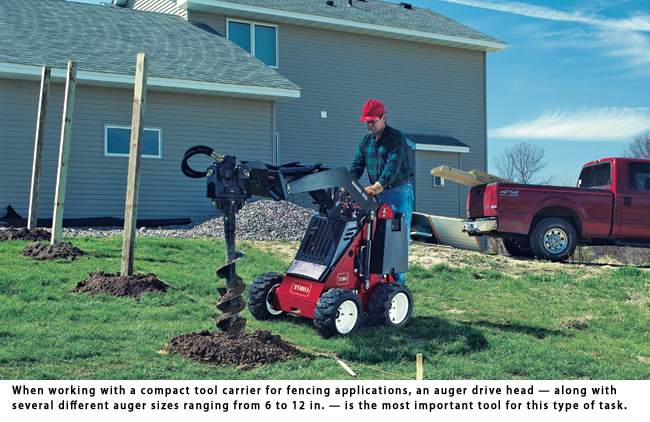
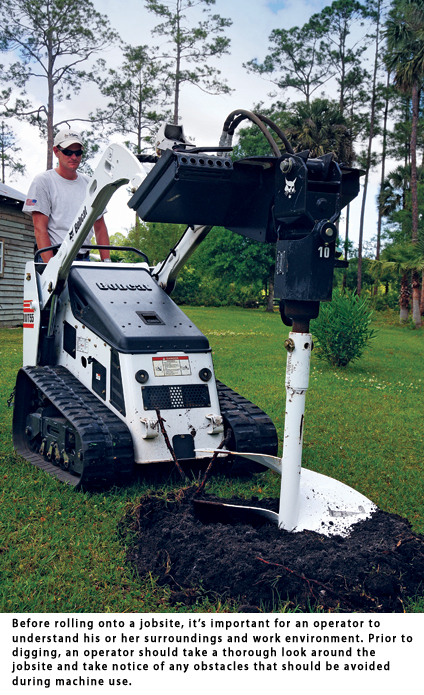
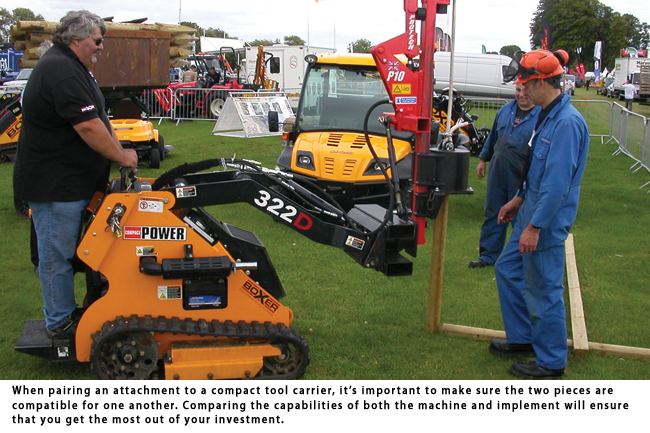

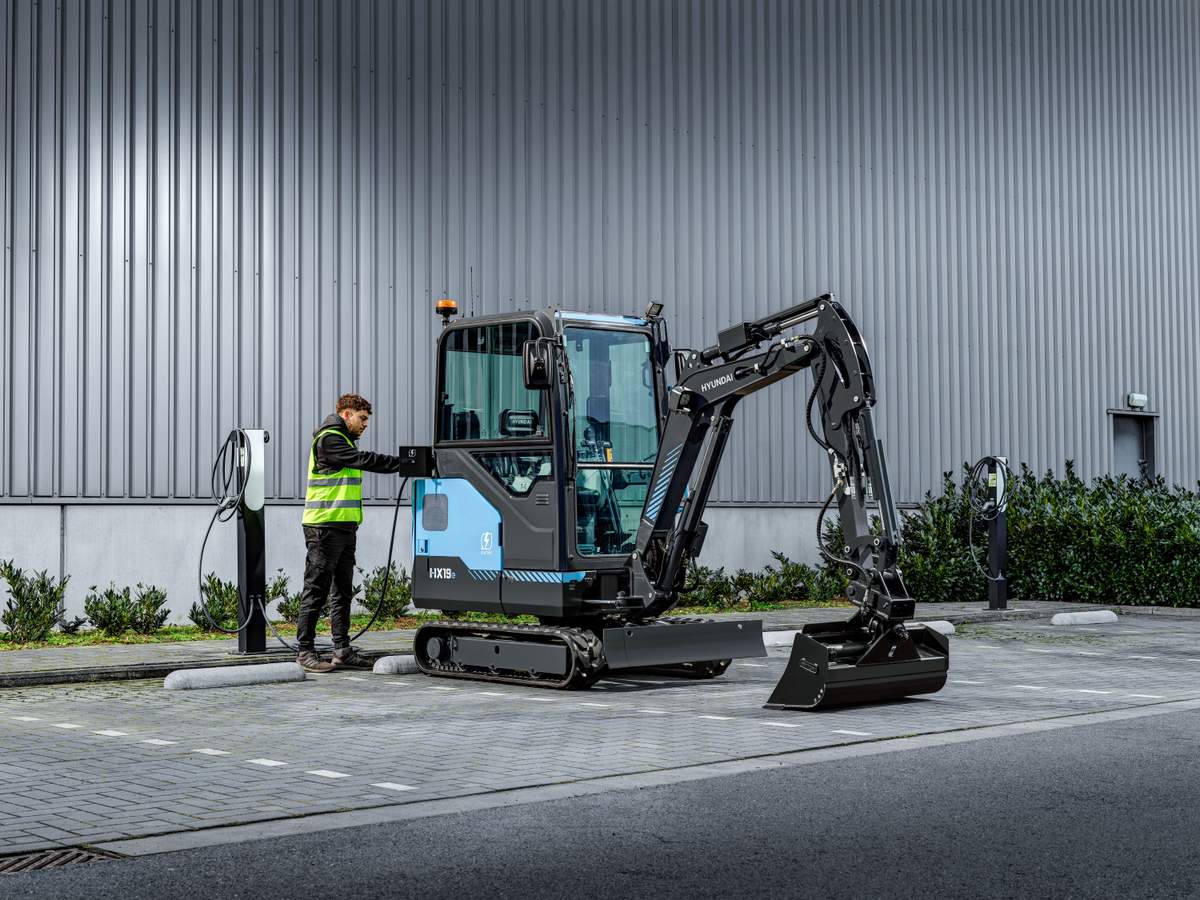

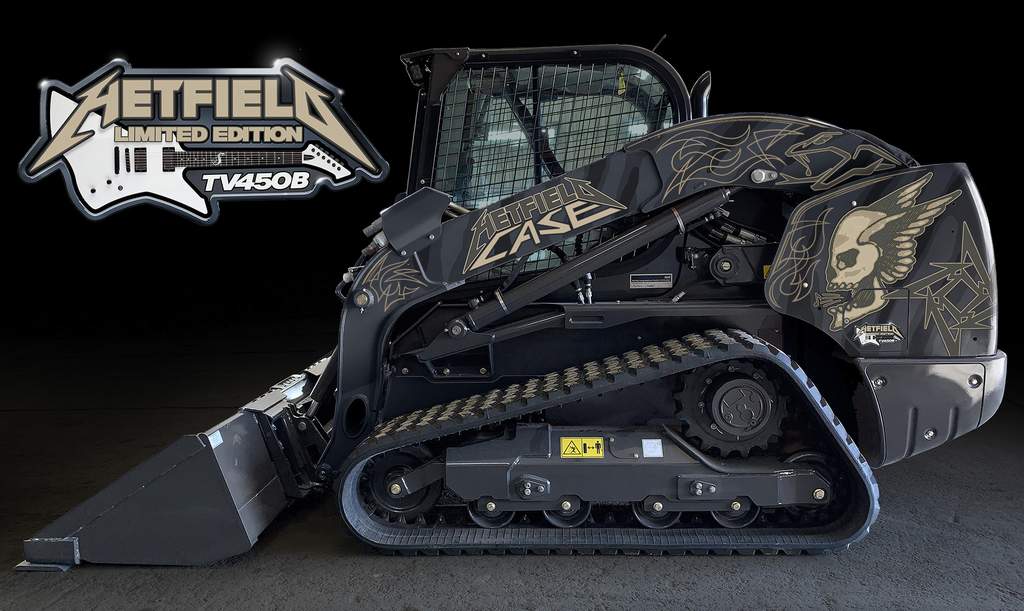
Comments are closed here.